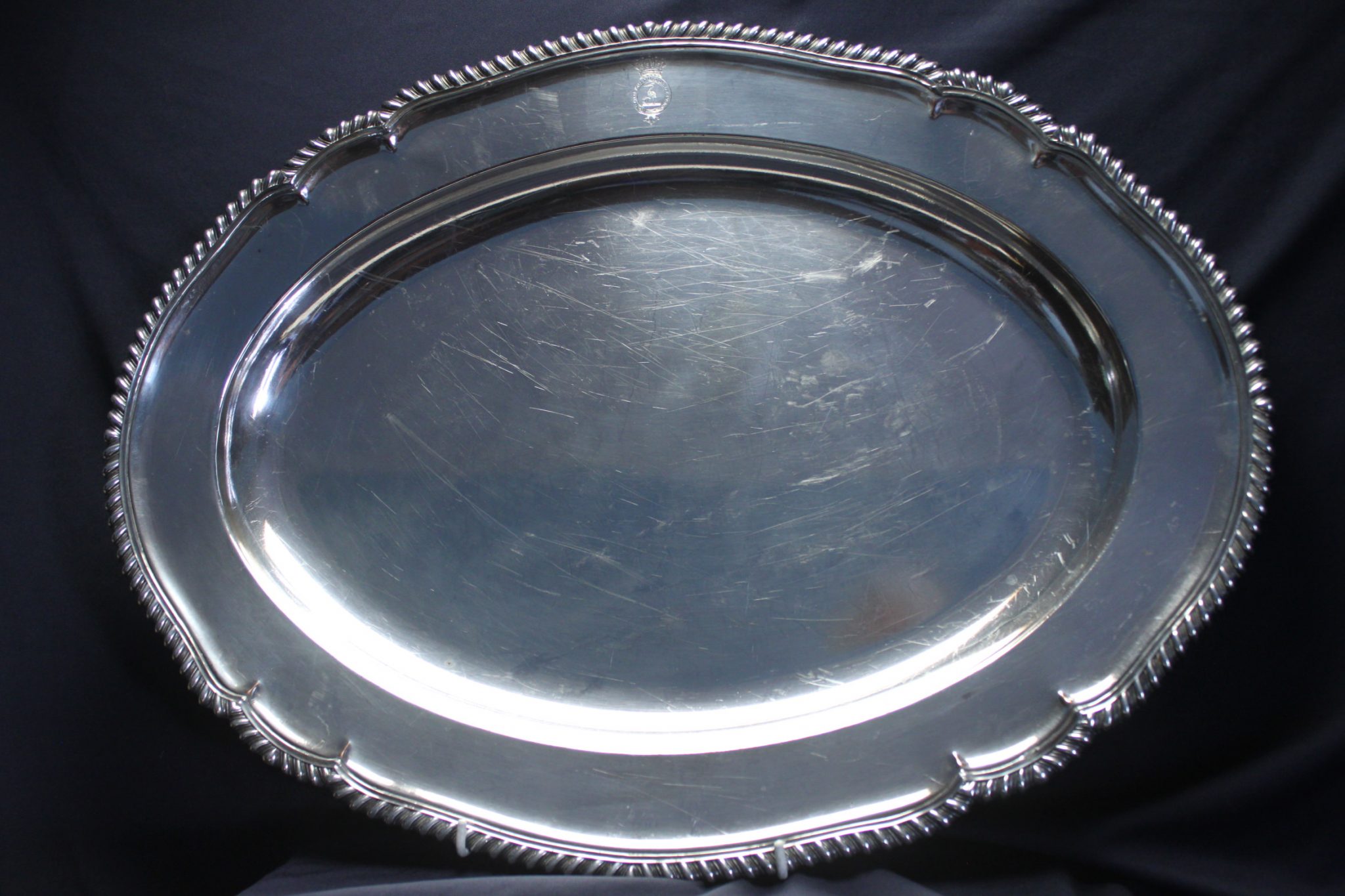


Now that I’ve shown you pieces of Old Sheffield Plate, I had better explain how they were made.
A platter or candlesticks of this size in solid silver would have been very expensive, as they still are today. Of the processes used that tried to make more affordable silver items, Old Sheffield Plate was probably the most successful until the invention of electroplated silver in the mid 1840’s. Thin layers of silver were fused onto an ingot of copper and after repeated heating and being put through rollers, you arrived at a sheet of the desired thickness. This sheet was then formed into the almost finished object. The edges of any piece would still show the thin layers of silver sandwiching the copper core, so on this platter cast silver edges were soldered on to hide the offending copper. Likewise on the caddy spoon a very fine silver wire was soldered on to the sides. This pair of Old Sheffield Plate candlesticks feature three heavily decorated silver mounts soldered on to the sconce, stem and base, the rest of the sticks being formed from Old Sheffield Plate. These mounts were stamped from silver sheet and filled from behind with solder. The candlesticks have suffered from nearly two centuries of polishing with the copper core now exposed. And so you arrive at items that look like solid silver, but at a much cheaper price-a bit of bling for the budget conscious.
A caddy spoon was used to take leaf tea from the tea caddy to the teapot

